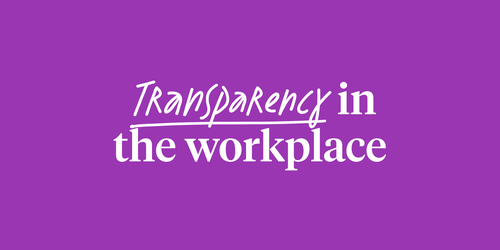
5 strategies for boosting employee morale and motivation after summer

In many organizations, the summer months bring a slower pace, freeing employees to go on longer vacations or enjoy modified work schedules like summer Fridays. But as the final days of summer slip by, people start to feel that tug toward cooler weather and full-throttle work mode.
The transition back to regular workloads and routines can be challenging. A Glassdoor poll of over 3,000 professionals found that 77% of employees feel anxious anticipating their post-vacation workload. Similarly, the end of summer (or any slow period at work) can bring with it a sense of unease about the return to business as usual.
But just like January sparks resolutions and new beginnings, the post-summer period offers a similar chance for introspection and renewed purpose. For leaders and managers, this is a prime time to re-energize, remotivate, and realign teams for a strong finish to the year.
Below are five actionable strategies to help your team smoothly shift gears, stay engaged, and thrive.
1. Reset goals
As everyone returns to full force at your organization, it’s a good time to take stock of how employees are progressing toward the goals they set in the first half of the year.
First, check in with your leaders to see if any organizational and departmental objectives have changed. Once you know what the business is driving toward, work with your team to establish the goals, milestones, and actions they want to tackle for the rest of the year. Collaborative goal-setting aligns everyone on what’s expected while helping them feel more grounded and excited about their work.
2. Get everyone back into a rhythm
When team members have been on different schedules or working at different paces, there can be some friction as everyone gets back in sync. Re-establishing regular team meetings and 1-on-1s goes a long way in bringing stability back. Consider adding new rituals to foster and deepen connections, which can also help drive employee performance. These activities could be as simple as a weekly team retrospective – or you could try rotating “micro-presentations” about hobbies, letting people share facets of their lives outside of work.
And whether it’s an hour-long meeting or a quick check-in, make sure these are always spaces where your team can show up fully, feel valued, and build mutual trust.
3. Provide strategic feedback
Culture Amp research shows that the strong majority (94%) of employees believe what they’re doing at work matters. This signals their intrinsic motivation to go above and beyond. However, motivation can wane when employees don’t see progress toward business and individual goals.
Regular, quality feedback – especially when it connects individual contributions to business goals – helps employees recognize their own momentum and the steps they need to take to get out of a slump.
But, for managers, the right thing to say isn’t always apparent. Tools like AI Coach give managers a private, safe, and secure space to think through the feedback they need to give, practice nuanced conversations, and develop action plans that strengthen performance and employee motivation.
4. Focus on employee wellbeing
Transition periods, like going from slow to more intense periods of work, can leave employees feeling drained. Be proactive in connecting with your team about how they’re doing. Ask what kind of support they need, if they need guidance reprioritizing their workload for the short or long-term, or if a new project could help get their creativity and energy flowing.
While active listening is crucial here, using employee listening tools can also help you gather insight into what people need at an organizational, team, and individual level, so you can take targeted action where it’s needed most.
5. Recognize and celebrate all wins
Our latest data shows that fewer than seven out of ten employees agree that they receive appropriate recognition for good work at their company (69%). Confidence in how recognition is handled is at a five-year low, with only 60% agreeing that the right people are recognized and rewarded.
Contrast this with Culture Amp research on Inc. 5000 companies, which shows that an atmosphere with high accountability, where leaders and peers regularly recognize the small wins hidden in their day-to-day work, builds trust and reinforces that everyone’s contributions matter.
“Building and fostering a high-performance culture isn't always about the big swings or the obvious wins. It is nurtured through all the little things that count and add up over time, that set you apart and no one else can replicate,” says Elisa Nerone, Chief People & Sustainability Officer at REA Group.
Recognition can have a big impact on an employee’s motivation, whether it’s delivered by a direct supervisor or a peer. It doesn’t have to be complex either – a simple shoutout in a meeting or a handwritten note to recognize a job well done can help people feel seen and valued.
Check out the infographic, What Inc. 5000 companies are getting right, to learn more about the qualities these organizations have in common.
Lead with transparency
No matter the time of year, your direct reports pay attention to and mirror your behavior – whether consciously or unconsciously. Schedule and workload changes can be hard on everyone, so check in with yourself about your wellbeing, too. Whether you’re excited to do some great work this fall, feeling unmotivated, or struggling to remain productive without burning out, your team is likely to notice. Instead of hiding negative feelings, consider opening up about them. Your honesty may encourage others to share their own challenges or how they’ve handled similar struggles in the past.
Everyone has ups and downs at work, and discussing them can help your team learn from and support each other. Let them know what has worked for you. Transparent, consistent communication about how you’re implementing the five strategies from this article in your own work can go a long way in maintaining the trust and psychological safety that are crucial to keeping morale high and everyone motivated.





